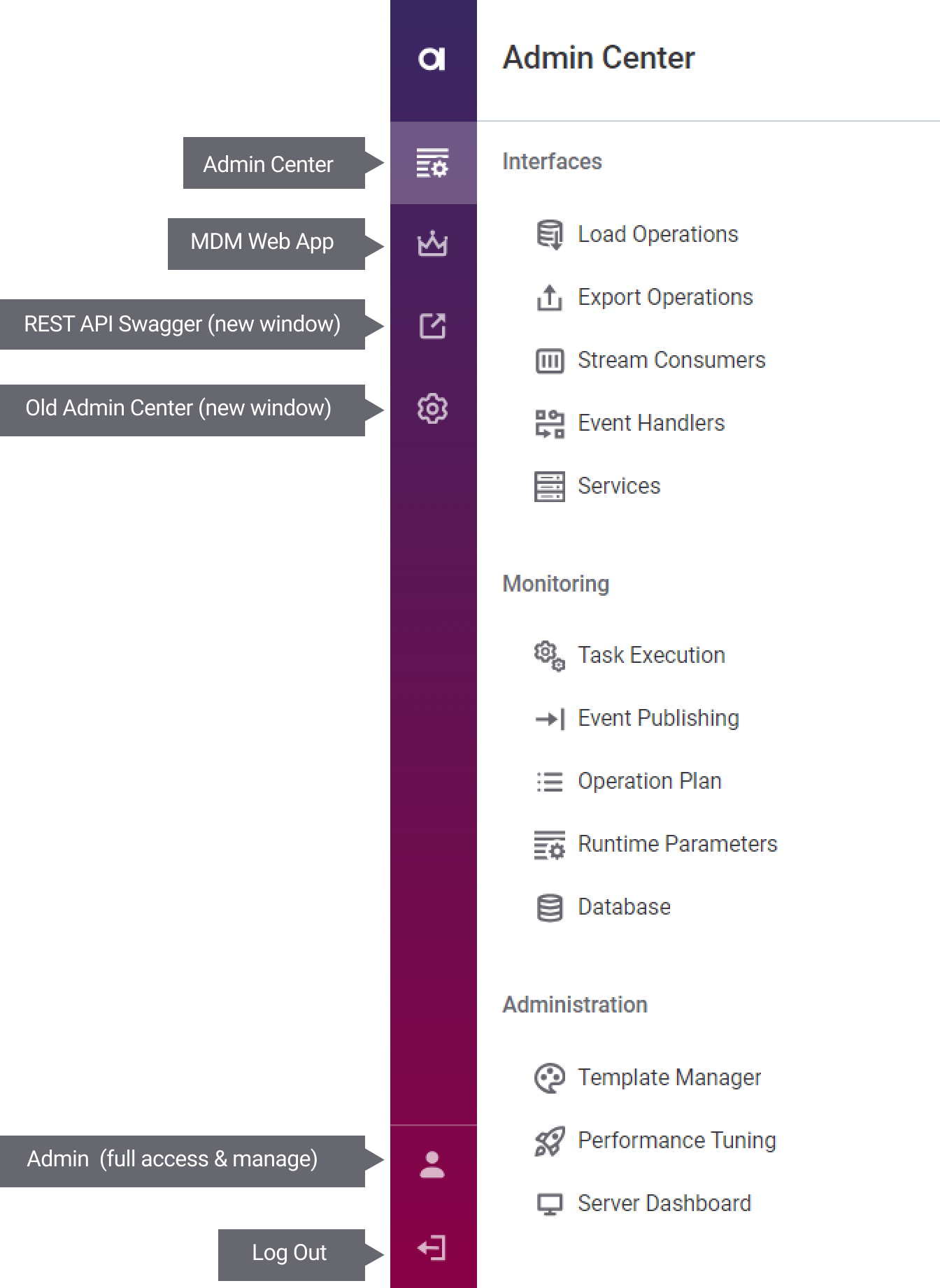Architecture
ONE MDM is composed of the following main components:
- MDM Server
-
Includes the MDM engine, various types of APIs, orchestration, scheduling, and other supporting components. The MDM engine is responsible for data cleansing, validation, matching and merging. It is model-driven, highly configurable, and capable of processing large volumes of data.
The MDM engine has a built-in Data Quality engine, ensuring that DQ validation and standardization are always an integral part of data processing and data modification done in the web application. See MDM Server.
- MDM Web App
-
A web application that serves as the user interface for managing master data hosted by MDM. It allows master data stewards, analysts, and managers to perform tasks such as viewing, creating, and editing master entries, verifying match results and applying manual merge exceptions, identifying data quality issues, and more. See MDM Web Application.
- MDM Storage
-
An internal database for the MDM Server and Web App. By default, it uses PostgreSQL or Aurora PostgreSQL. For details, see MDM Storage.
- Keycloak
-
An open-source identity and access management (IAM) solution that allows single sign-on. To learn more, refer to the official Keycloak documentation.
In addition, a number of optional components can be integrated with the MDM Server, such as AI matching (for demo purposes only), data quality and metadata management tools, and shared platform components.

MDM Server
The MDM Server consists of a number of modules that provide master data consolidation based on the MDM model as well as the interfaces and services which load, export, and modify data.
The following diagram represents a simplified schema of the module, while module descriptions are provided in the following sections.
For more details about MDM capabilities, see MDM Capabilities.

Core components
- MDM Engine
-
Defines the operation plan and executes the steps of the MDM process. To load or provide data, the engine is triggered by batch interfaces, or streaming or native services.
It is also connected to the event handler, publisher, and task listener so it can initiate different actions during data processing.
- Model
-
The central piece used to define all MDM functionality and speed up implementation. The MDM model is prepared during project development using ONE Desktop.
- Data Stewardship Logic
-
Contains the logic based on which you work with tasks, workflows, drafts, and other features available in MDM Web App. See MDM Web Application Configuration.
Interfaces
- Batch Exports and Loads
-
Batch interfaces used to export data from the persistence layer or to load data from external sources for further batch load processing, such as data consolidation. See Initial Load Operation, Complex Export Operation, and related articles in these sections.
- (Native) Services
-
An element of the MDM engine representing the service interfaces, which provide abstraction for the service gates and allow the engine to integrate in service-oriented architecture (SOA). They are derived from the data model and available in a variety of types (using different formats over different protocols, including REST API). See Configuring Native Services.
- Stream Interface
-
Allows to group messages and process them in bigger chunks. Currently, JMS, Kafka, and Salesforce interfaces are supported. See Configuring Stream Consumers.
- Event Handler and Publisher
-
Captures data events or changes from the engine, which allows to propagate them to consuming systems. See Adding a Data Event Handler and Publisher.
| For details about MDM integrations, see MDM Integration Architecture. |
Supporting components
- Task Listener
-
Starts different actions based on events coming from the MDM engine. As such, it facilitates event-based orchestration.
- Embedded Runtime Server
-
Provides supporting tools for scheduling, orchestration, business services, and connectivity.
Note that not all features are compatible with MDM. For details, refer to ONE Runtime Server.
MDM Web Application
MDM Web Application is the main user interface for most daily tasks: this is where you view, edit, and manage records mastered by MDM Server. To learn more, see Getting Started.

In addition, an administration console called Admin Center is available for operational tasks and monitoring. This includes DQ and MDM services, active workflows, scheduled and on-demand executions, resource monitoring, and more, depending on your configuration.
To learn more, see MDM Web App Admin Center.

Was this page useful?
